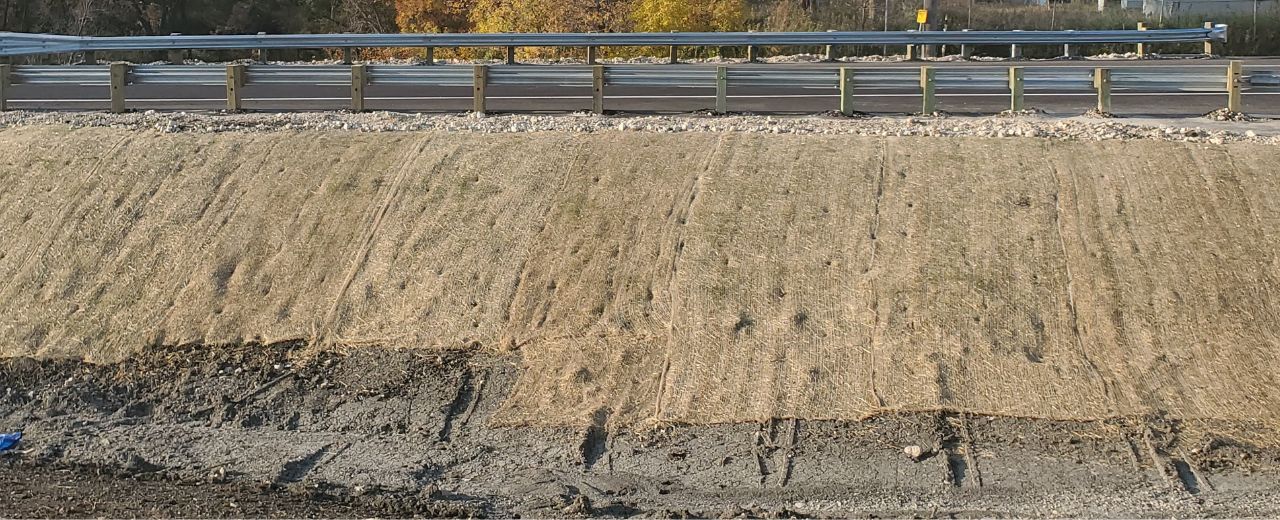Memphis Erosion Control Solutions Memphis TN: Your Local Erosion Control Specialists
Wiki Article
Best Practices for Erosion Control in Building Projects
Are you dealing with a building and construction project and concerned about erosion control? Look no additional! In this post, we will lead you with the very best techniques for protecting against disintegration on your website. You'll discover five crucial strategies, reliable debris and runoff management methods, vital considerations for incline stablizing, and ideas for shielding vegetation and soil. We'll likewise explore the significance of executing proper water drainage systems. Prepare to take on erosion head-on and make certain the success of your building job.5 Vital Erosion Control Strategies
To properly regulate disintegration on your building and construction site, you'll require to apply important methods such as incline stabilization and sediment control measures. Incline stablizing is critical in preventing dirt erosion on high inclines. One more effective technique is the use of disintegration control coverings or mats, which are put on the incline and assistance keep soil particles while permitting vegetation to expand.
Reliable Debris and Runoff Management

You can properly handle debris and drainage in your construction project by carrying out correct disintegration control measures. Sediment and drainage administration is critical to stop disintegration and shield the surrounding atmosphere. One reliable measure is the installation of silt fences along the perimeter of the building and construction site. These fencings aid to contain sediment and prevent it from getting in close-by water bodies. Another important practice is the implementation of erosion control blankets or floor coverings. These blankets offer a protective layer on bare dirt, lowering the effect of rains and protecting against disintegration. Furthermore, using debris containers or debris traps can assist to record sediment and avoid it from entering stormwater systems. Routine upkeep of these measures is important to guarantee their efficiency throughout the construction job. This consists of cleaning up and evaluating sediment containers and consistently replacing silt fencings and erosion control coverings as needed. By carrying out these disintegration control measures, you can properly manage debris and drainage in your construction project, minimizing the effect on the environment and conforming with governing needs.
Key Factors To Consider for Incline Stablizing
You require to thoroughly examine the incline's features, such as its drainage, make-up, and angle patterns. Look for indications of erosion, such as exposed roots, splits, or slumping soil.An additional option is to plant vegetation more on the slope, as the origins can help anchor the dirt and control disintegration. Furthermore, setting up erosion control blankets or floor coverings can offer prompt defense while greenery ends up being well-known.
It's important to regularly keep an eye on the supported slopes to guarantee their efficiency. Maintain an eye out for any indicators of activity or erosion, and take prompt activity if needed. Routine upkeep, such as examining and repairing any kind of broken actions, is likewise important to guarantee lasting stability.
Best Practices for Plant Life and Soil Security
One efficient way to shield greenery and dirt on slopes is by regularly inspecting for signs of disintegration and taking immediate activity if essential. Beginning by checking the slope for any type of indicators of erosion, such as subjected roots, bare dirt spots, or sediment build-up at the base. Implement disintegration control procedures such as installing erosion control coverings, mulching, or even building maintaining wall surfaces if required.Implementing Proper Drain Equipments
To successfully implement appropriate drainage systems, it's vital to consider the incline gradient and dirt type. When it concerns managing water flow and preventing erosion, recognizing these factors is vital. The incline gradient plays a significant role in identifying exactly how water moves throughout the land. Steeper inclines can result in faster water circulation, Get More Info raising the risk of erosion and flooding. On the other hand, gentler slopes enable site link water to move much more slowly, decreasing disintegration capacity. By assessing the slope gradient, you can develop an effective water drainage system that accommodates the all-natural water movement.Sandy soils tend to drain pipes faster due to their coarse appearance, while clay soils have a slower water drainage rate due to their portable nature. Additionally, taking into consideration the soil qualities aids avoid waterlogging, which can lead to poor plant growth and damage to structures.
Verdict
To conclude, when it comes to erosion control in construction jobs, you must comply with these ideal methods. Apply efficient sediment and overflow administration strategies to avoid pollution. Think about incline stabilization techniques to ensure the stability of the website. Protect greenery and dirt by making use of appropriate procedures. Develop correct water drainage systems to handle water circulation (Memphis Erosion Control Solutions Memphis TN). By complying with these essential methods, you can successfully regulate erosion and make sure the success of your building and construction project.To properly control disintegration on your building and construction website, you'll need to execute vital methods such as slope stabilization and sediment control measures. Incline stabilization is essential in avoiding dirt disintegration on high slopes. Another reliable method is the use of disintegration control coverings or mats, which are placed on the incline and help retain dirt particles while enabling greenery to grow. One more option is to grow plants on the incline, as the roots can help secure the dirt and control disintegration. Implement erosion control measures such as installing erosion control coverings, mulching, or also constructing retaining wall surfaces if needed.
Report this wiki page